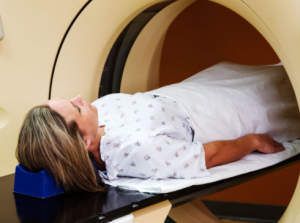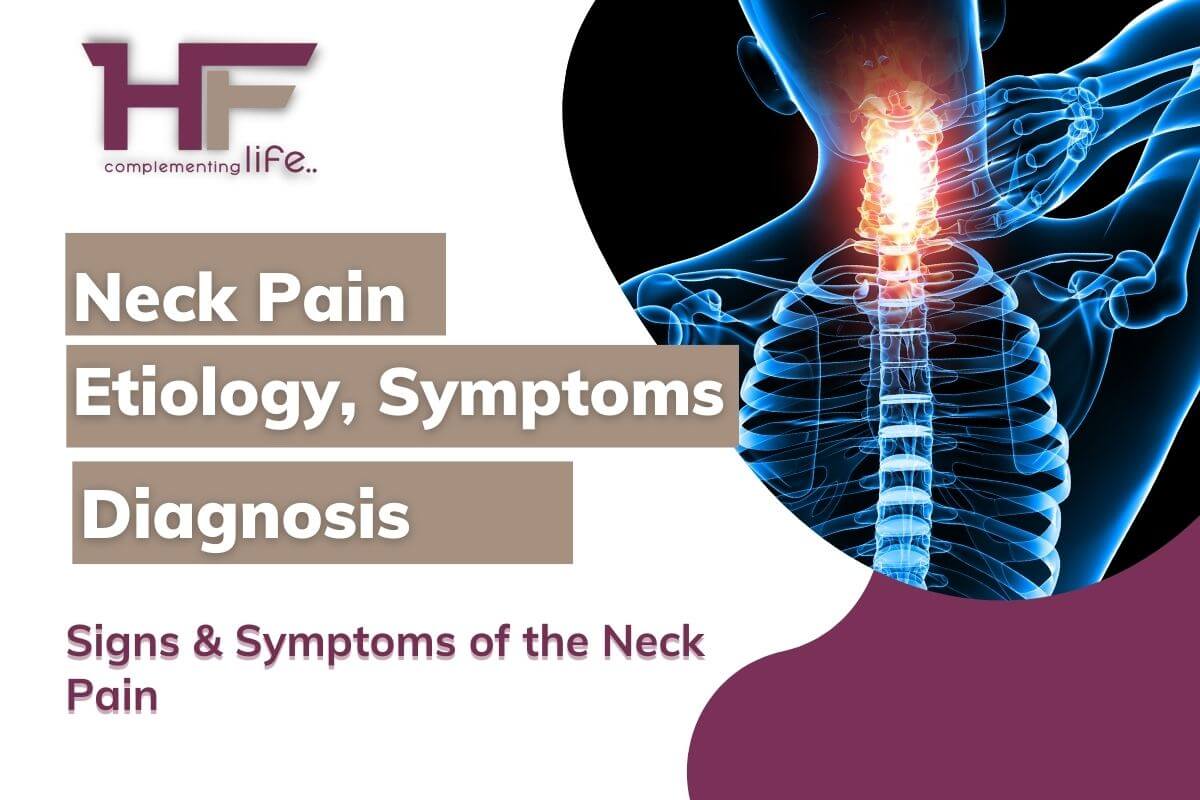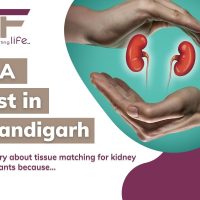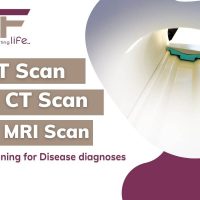Isn’t it obvious that we often do get annoyed due to the lingering pain around our neck?
Well, pain in the neck is a prevalent medical condition. There are tons of causative factors and reasons for neck pain that can lead to this throbbing pain. Be it stopping you from performing your regular activities or making it worse to rotate your head at times; there is so much that you have to suffer due to this ailment.
However, many people often relate this pain with increasing age, but this is not the case every time. Hence, today we are here with a very detailed and thorough post on neck pain. Whether you have just now woken up with a cramped neck or have already been suffering from chronic neck pain, our guide will help you understand the knick-knacks of this recurring neck pain.
So, let us begin now!
CContents
What is Neck Pain?
The vertebrae in your neck run from the head to the upper torso. Cervical discs cushion the stress between the bones of the neck. The cervical spine, or neck portion of the spinal column, comprises seven bones (C1-C7) separated by intervertebral discs. During exercise or any other routine activity, these discs let the spine move freely and function as shock absorbers.

However, due to many factors, these discs cannot absorb the shock or get degenerated. This ultimately causes neck pain, which can be a huge problem for an individual. Around 20% to 70% of adults suffer from this triggered pain and complain that it often interferes with their routine activities.
The most disturbing phase is when the neck pain radiates to the entire upper body, eventually affecting your chest, arm, shoulder and even cause headaches. Suffering from neck pain may be depressing, making it difficult to concentrate and get through the day.
Hence, it is always recommended to get it diagnosed at the earliest to not face the worst.
Etiology Of The Neck Pain
People over the age of 50 are more likely to experience neck pain. But, aside from old age, the reasons for neck discomfort are as diverse as the list is extensive.
Health Conditions
- Osteoarthritis: The most prevalent type of arthritis impacting millions of individuals is osteoarthritis. It happens when the protective cartilage that protects the ends of the bones deteriorates over time. Eventually, it can lead to the formation of osteophytes, which clog the spinal canal and squeeze nerve roots in the neck.
- Meningitis: The inflammation of the thin tissue covering the brain and spinal cord is known as meningitis. A fever and a headache are common symptoms of meningitis, as is a stiff neck. Meningitis is a medical issue that can be deadly.
- Other types of arthritis: Many kinds of arthritis, especially inflammatory ones such as rheumatoid arthritis, psoriatic arthritis, ankylosing spondylitis, and juvenile idiopathic arthritis, can cause cervical spine pain. Chronic neck inflammation damages the joints that allow mobility in the neck.
- Other diseases: Although tension is the most common cause of neck pain or any other neurologic impairment, it still may indicate something more serious. These signs and symptoms ought not to be disregarded. Spinal infection, malignancy, fracture, spinal cord compression, and other complications are possible. If you’ve had a head injury, your neck has most certainly been damaged as well. Seek medical care as soon as possible.
- Heart Attack: Neck pain is a very common symptom of a heart attack. Your diaphragm and an adjacent accessory nerve might get inflamed in a heart attack, leading to pain radiating to other areas of your body, including your neck.
Accidents and Injuries
- Nerve Compression: The compression of a cervical nerve can cause radiating pain, which moves up behind the eyes, up into the head, and down the arms. Another very common cause of nerve compression and spinal stenosis is herniated discs; however, bone spurs can also squeeze nerves.
- Whiplash: A frequent neck injury is caused by forcing the head to rotate forward or backward beyond its usual range of movement. The muscles and ligaments in the neck tense and constrict due to the fast movement. This causes muscular stress, which leads to discomfort and stiffness. Whiplash is usually caused by a vehicle collision or any other heavy traumatic injury.
Lifestyle Issues
- Bad Posture: The cervical spine will have to bear a greater weight when the head is pushed forward in a bad posture. One general rule is that the cervical spine needs to handle an additional 10 pounds of weight for every inch the head is held forward. This hurts your neck tissue in the long term.
- Stress: If you’re exhausted, you could be clenching the muscles that move your neck without even realizing it, which might contribute to a stiff, painful neck.
- Heavy Weight: Picking up heavy weight imposes an unnecessary strain on the spinal cord. Also, the weak abdominal muscles may fail to support it. This can disturb the spine’s equilibrium and cause the neck to tilt forward to adapt.
Neck stiffness or discomfort can arise in rare cases as a result of:
- Spine cancer
- Tumors
- Infections
- Abscesses
- Congenital abnormalities
Signs & Symptoms of the Neck Pain
Some very common symptoms of neck pain are:
- Headache
- Neck muscle stiffness
- Loss of neck mobility
- Pain that shoots down the arm
- Numbness in fingers and hand
- Weakness in shoulder, arm, and hands
- Trouble in swallowing
- Nausea
- Vomiting
A few of the diseases like lung tumor or coronary artery disease also mimic the same symptoms. Hence, it is always better to take early measures by performing the much-necessary diagnostic tests to start with earlier treatment for neck pain.
Diagnosis Of The Neck Pain
It is crucial to evaluate the history of the symptoms while identifying the reason for neck stiffness. The neurosurgeon will note the pain site, severity, duration, and radiation of the pain while examining the medical history.
Is moving or shifting the head making the discomfort worse or better? Also, the previous neck injuries and treatments are documented. Positions or motions that aggravate and/or relieve are also noted. The neck is checked both at rest and when moving. Tenderness is noticed when the neck is palpated.
Additional testing for undiagnosed neck discomfort may include the following:
- X-ray
With the help of electromagnetic radiation emitted by an X-Ray, you can get a clear picture of the bones in the neck. X-ray pictures can be used to diagnose vertebral fractures, spinal degeneration, and specific malignancies.
- CT scan
A CT scan uses X-rays and a computer to create a sequence of cross-section pictures that provide for a more detailed look at the bones than a regular x-ray. CT scans are beneficial in detecting minor bone abnormalities. A CT scan is also performed along with a myelogram to get an enhanced view of the nerve passage.
- MRI scan

An MRI features detailed cross-sections of the bones and soft tissues using radio waves and a powerful magnet. If it is available, neck pain MRI is usually the initial imaging choice for examining soft tissues since it avoids the hazards associated with extra radiation dosage and myelography.
- Electromyography
Electromyography (EMG) is a test that examines the health of muscles and the nerve cells that regulate them.
Treatment Of The Neck Pain
Non-Surgical Treatment
- Cervical Collar
A cervical collar is used to give support and limit mobility as you recover from a neck injury. It aids in the alignment of your cervical spine.
- Medications
Several over-the-counter and prescription medicines may aid in the management of neck discomfort, inflammation, muscular spasms, and sleep disruption.
- Non-Steroidal Anti-Inflammatory Medications (NSAIDs) like naproxen, ibuprofen, and acetaminophen
- Apply NSAIDs ointments topically
- Ice and Heat Therapy
- Lidocaine based patches
- CBD creams/ointments.
- Physical Therapy
The majority of physical therapy treatments for neck pain include an exercise regimen designed to strengthen and extend the neck to alleviate pain. Physical therapy is the best treatment for neck pain than surgery or pain medication, according to research.
- Chiropractic Care
A chiropractor may be able to help you with your neck pain by performing chiropractic neck care. These tweaks relax the joints of the cervical vertebra column in the neck, which aids in the relief of pain triggered by muscular spasms and pinched nerves.

Surgical Treatment
When non-surgical treatments for neck pain fail to give relief, surgery may be required. Patients may be candidates for surgery if they:
- Conservative treatment is ineffective.
- The patient is suffering from increasing neurological problems affecting the arms and legs.
- Due to the continuous pain, the patient’s productivity suffers.
- The patient is having trouble with his or her balance or walking.
- Overall, the patient is in good health.
Two common types of surgeries are:
Stabilization
It helps in limiting the movement of the vertebrae. Spinal fusion is a surgical procedure in which the surgeon uses plates, screws, bones, and other materials to restrict mobility between the vertebrae and stabilize the spine.
Decompression
It helps in the removal of the tissue that is pressuring a nerve structure. Different types of decompression techniques are:
- Corpectomy
To gain access to whatever is squeezing the spinal cord or nerve, the vertebral body is eliminated.
- Discectomy
The surgeon removes the damaged part of the disc.
- Foraminotomy
Removal of the bone spurs so that the nerve is released from pressure.
The advantages of surgery should always be balanced against their risks. Although many neck pain patients report considerable pain reduction following surgery, there is no assurance that surgery will help everyone.
Follow-Up
If your neck pain resolves with the conservative (non-surgical) treatment, follow-up will be done whenever needed. However, in surgical treatment, follow-up is mandatory from both patient’s and doctor’s end.
What is the prognosis for persons suffering from neck pain?
A lot of people suffer from neck discomfort as a consequence of bad posture and muscular tension. In these instances, if you maintain excellent posture and rest your neck muscles when they are painful, your neck pain might subside.
However, it continues at a moderate intensity; we suggest you go for the diagnostics tests as soon as possible. You surely would not want to get under the surgical blades.
HealthFinder is here at your doorstep now to help you complete various diagnostic tests, be it MRI scan, CT scan, X-Ray, and so on. Visit our website and have a look at what it takes to stay happy and pain-free.










Comments